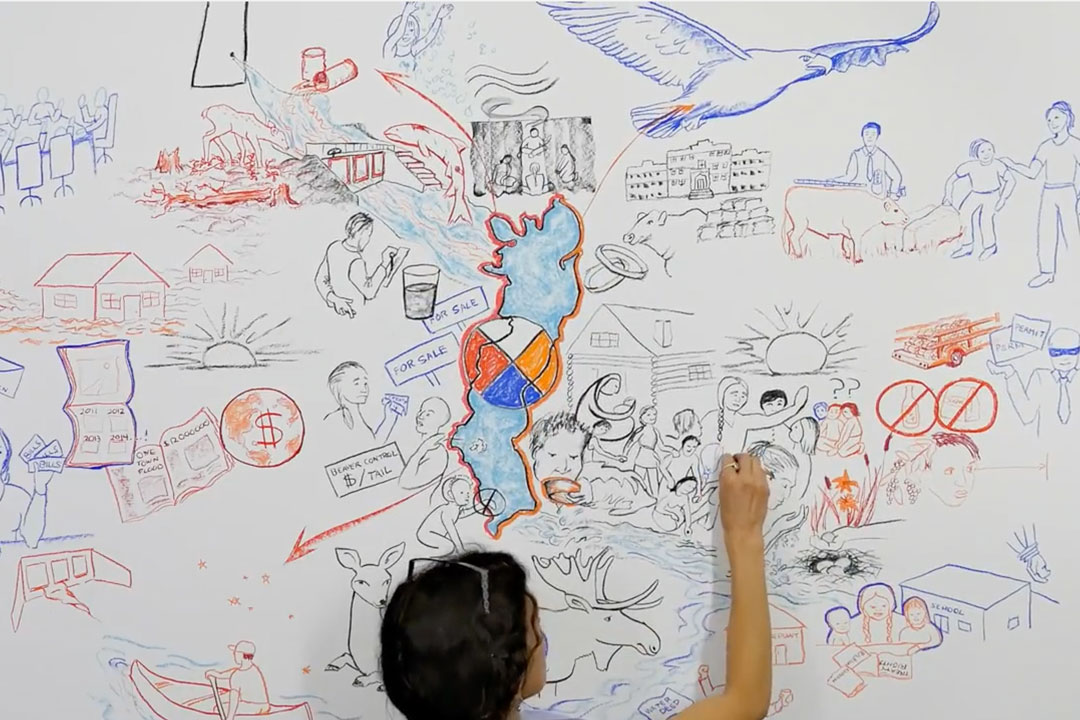“The interests of Indigenous people have traditionally had little voice to influence or sanction laws of water protection, regulation, and enforcement on First Nations land in Canada,” said School of Public Health (SPH) Associate Professor and lead researcher Lalita Bharadwaj. “It is time we gather to hear the voices from these communities, and to share these voices widely”.
A moving account which uses animated drawing and narration to charter the history and sacredness of the community’s waters, the video was launched to the Yellow Quill First Nation at a special event on April 11.
A receptive audience of over 50 Elders, youths and community members came together for food and a first screening of the video, where local artist Cheryl Buckmaster, who was chosen to draw the symbols for the video’s animations, gifted her original drawing to the community.
The video is part of a one-year collaborative Indigenous knowledge mobilization research project initiated in May 2016 titled Spirit, Safety and a Stand-off, led by Bharadwaj and funded by the Water, Economics, Policy, and Governance Network (WEPGN) at Brock University.
The research team’s ultimate goal was to present their findings in a way that reflected the Yellow Quill First Nation culture and traditions and engaged community members, especially youth, explained SPH Research Associate Lori Bradford.
“We wanted to find a way to translate results that supported the community’s sacred knowledge and storytelling traditions,” she said. “The video is designed to capture and share the knowledge of the waters at Yellow Quill from the Elders point-of-view, in a blending of traditional Indigenous storytelling and fine art.”
The community chose video as the means of presentation after seeing a previous whiteboard animation project produced by Bharadwaj and Bradford in 2015 on changes to the Slave River and Delta, told through the memories of South Slave region Elders.
